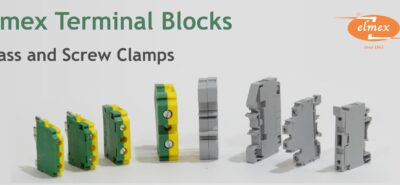Tips To Ensure Protection From Heat Condensation For Metal Enclosures
Metal electronic enclosures are vital for various applications, including building, industrial and utility equipment. These enclosures are generally made from rigid metals, like stainless steel or aluminum. Their purpose is to house and protect such equipment from hazardous and damaging environmental conditions. Sometimes, they are also used to protect equipment from electromagnetic and radio interference. Few types of equipment you will find housed inside them are:
● Electronic components like rotary switches, contactors, circuit breakers and control panels
● Pressurization and purging equipment
● Distribution boards.
However, there is one danger that is very difficult to tackle in metal enclosures. This is the formation of condensation, similar to how you see dew form on the grass in the early morning. But why is condensation dangerous for metal enclosures? What steps can you take to protect metal enclosures from it? We will look at that in the following article. Let’s dive in.
Why is condensation dangerous and damaging?
Condensation contains moisture which forms on the metal enclosures and can affect the electronic equipment inside. Some negative ways condensation can be damaging are:
- Gradually decreases the performance of components
- Causes heat buildup due to an increase in component resistance
- Increases the risk of short-circuiting, as the moisture formed can contain impurities and conduct electricity.
- It allows the buildup of rust which can damage the metal enclosure and electric equipment inside
- Increases risk of shock for employees and maintenance crew
- Causes frost to develop if metal enclosures are outside in freezing conditions
- It causes contamination by mold buildup and other similar organisms.
How does condensation occur in metal enclosures?
Before we discuss ways to prevent condensation, we must understand how it occurs in the first place. Typically, the main reason for condensation is humidity. Humidity is the amount of water vapor saturated in the air at a given point. Typically, a higher temperature increases the capacity of air to hold water vapor. Therefore you may have often heard people saying that the humidity is very high in summer. However, if the temperature cools down, this can reduce the capacity of air to hold water vapor, which slowly begins to condensate into its liquid state. This tends to occur in the early morning when the temperature is at its lowest or temperature fluctuations that can occur with changing weather. It can also happen when the moist air comes in contact with metal enclosures at a low temperature, causing the air to cool down and leave condensation on the surface. As a result, any solutions for eradicating condensation will have to be made with this phenomenon in mind.
How can you prevent condensation and protect enclosures from it?
There are many ways you can prevent condensation and protect enclosures from moisture. There are:
Ventilation
Ventilation is a great way to reduce the chances of condensation occurring. Typically, electronic equipment gives off heat which can cause temperature changes when it interacts with the air. This leads to higher chances of condensation forming. Besides that, lack of ventilation can lead to overheating, damaging the equipment. Therefore, consider investing in a ventilation system with fans that will cool and circulate the air within the enclosure. You can use a hygrostat to monitor the humidity levels and to start up the ventilation system when it is too high. There are naturally ventilated enclosures available, but a powered ventilation system is much more effective.
Avoid placing enclosures in areas where temperature fluctuations can occur
Temperature fluctuations are one of the biggest culprits for condensation. This is because it causes the air’s capacity to hold vapor suddenly changes, causing large amounts of condensation to form. To prevent this, you should place outdoor enclosures in the ideal location. For starters, avoid placing them in direct sunlight or near heat sources. Sunlight is unreliable due to changes in weather conditions, and heat sources can have varying amounts of heat. Some heat sources you should be aware of are engines or motors. Secondly, ensure they are not placed near damp areas or bodies of water, as steam can form there.
Use dehumidifier
Dehumidifiers are excellent devices that can help reduce the amount of humidity inside the enclosure. This ensures that even if temperature fluctuations occur, the air will be deprived of water vapor leading to less condensation forming. Various types of dehumidifiers are available, each with its own working principle. For example, one humidifier uses a refrigerated coil, while another uses a heat pump to condense vapor on a cold surface. You can choose whichever one suits your goals and budget. Such humidifiers and heating coils are seldom used with temperature and humidity controllers. There are a few products that will help with your dehumidifying requirements for control panels at GoSwitchgear process control product category.
Install an anti-condensation unit
An anti-condensation unit is a system with a heater operated by a humidistat. When the air outside cools down, it also causes the air inside the enclosure to change its temperature slowly. As we have discussed before, this can cause condensation. The humidistat detects this humidity change and fires up the heater, causing the air to reabsorb the moisture. After all, the capacity of air to hold water vapor is higher when it is hot. This ensures that condensation does not occur on crucial electrical equipment in the enclosure.
Install an air conditioning system
Installing air conditioning is ideal if the enclosure is placed in temperatures exceeding 40C or 104F. This is generally the case with locations in the Middle East, like the UAE, Saudi Arabia, Oman, and Qatar. The temperatures in outdoor metal enclosures in these areas get excruciatingly high. The electric equipment already produces a lot of heat, so overheating becomes a significant risk. However, you must take measures to counter humidity if it tends to be high. This ensures that the cooling from air conditions does not result in condensation.
Add silica gel
Silica gel is an excellent option if budget is an issue. You have likely seen silica gel housed in small packets when you buy new products. Silica gel is a desiccant that absorbs and retains moisture from the air. So you can place them all around within an enclosure, and it will ensure condensation does not become an issue. However, these desiccant packets have a certain capacity to absorb moisture before they become saturated. As a result, silica gel packets must be regularly replaced once saturated. This requires on-site labor, so you must compare the costs and decide whether investing in an anti-condensation system or labor is more feasible.
Purge with dry nitrogen
Dry Nitrogen purging is generally used in manufacturing applications to create a dry and safe environment. It does this by removing the moisture and humidity from the environment. This ensures that the environment is safe for the manufacturing process. As a result, they are an excellent alternative for preventing condensation from occurring within metal enclosures.
IP66 Metal Enclosures
One more way to solve these condensation issues are to find a good quality IP66 metal Enclosures. The IP66 rating will ensure that condensation is controlled and water ingress is prevented. This can be powered up by using gaskets that cover the corners around the single door metal enclosures and gland boxes. Metal Enclosures of IP65 rating are also a good and cost effective choice for areas with lower humidity and rainfall.
To sum up
Metal enclosures are vital for many applications as they house and protect electrical equipment. However, they are prone to condensation, which can damage sensitive electrical equipment. This condensation forms due to the humidity of the air, as temperature changes cause the water vapor to condense. There are a variety of ways to prevent condensation.
Ventilate the enclosure to ensure heat given out by equipment is removed from the enclosure. Avoid areas where temperature fluctuations occur, as this increases the chances of condensation forming. Use a dehumidifier to reduce humidity so that air contains less water vapor. Install an anti-condensation system that fires up a heater when humidity becomes too high. Add air conditioning in hot areas to ensure reduced moisture. Add silica gel packets to enclosures, which are desiccants that can absorb moisture from the air. Purge the enclosure with dry nitrogen to remove moisture and humidity.
We hope this article has been informative and shown you how to reduce condensation in metal enclosures. Thank you for reading!










Leave a Reply